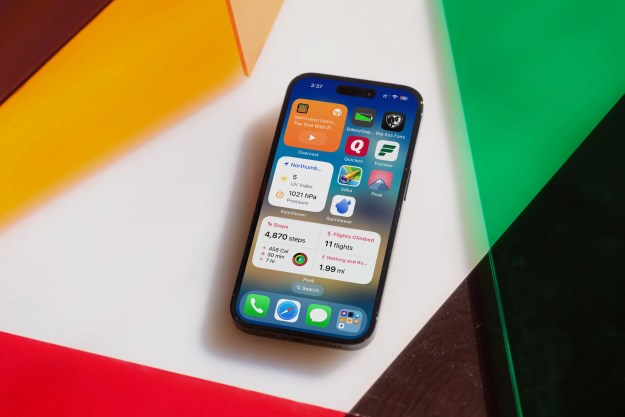When you hear fans of Android phones argue with fans of Apple’s iPhones, they usually bring up widgets. Widgets are tiny apps that add functionality to a phone’s home screen. You can place a weather report, a few news headlines, or a rotating photo from your favorite album right alongside your apps and folders. Apple has offered a form of widgets since 2014, in its own dedicated view, but iOS 14 finally lets owners place those widgets directly on the home screen instead of shuffling them off to a hidden window.
Android, on the other hand, took an early lead with widgets. Widgets were a key feature of the first Android phone, the T-Mobile G1.
At some point, though, Android widgets stagnated. Widgets still see a few updates, and occasionally new features appear, but the largest
The importance of training
The addition of widgets to iOS 14 is part of Apple’s long-term strategy. Clearly, Apple didn’t feel widgets were a competitive advantage, because the company mostly ignored the feature for years without fear of losing its faithful. I’ve been using an iPhone continually since 2007, but I often forget widgets are available at all.
Apple could have moved widgets to the iOS home screen at any point. The question was never technology, but usability. Perhaps the limited RAM on iPhones made active home screen widgets prohibitive. However, it’s more likely that Apple was leery of adding this complicated feature to a device that is the benchmark of simplicity in the mobile device world.
Interface design is a language. Users need to learn fluency before they can be comfortable communicating. Apple needed to teach us scrolling, pinching, swiping, and the occasional long-press before it could introduce a complicated interface concept like widgets. Widgets require quite a bit of thought and design to implement on the user side, or else the widgets become obtrusive.

We’ve already seen what happens when a company moves too quickly on a complicated interface improvement, and that move came from Apple. Apple introduced pressure-sensitivity, known as “Force Touch” on the Apple Watch. Then came “3D touch” on the iPhone, at the same time iOS introduced widgets in 2014.
The concept of 3D Touch seems simple. Press on something to activate it. Press harder to get a little more out of it. Somehow, it never clicked. While most of Apple’s apps offered a 3D Touch menu, not all first-party apps adopted it. Third-party adoption was even lower, likely thanks to Apple’s half-hearted support. Apple never spread 3D Touch features across every iOS device, and splintered the feature even further with a less-responsive “Haptic Touch” feature.
Apple introduced 3D Touch too early. It was a fantastic feature, and incredibly useful. Google’s Android always had a long-press feature that functioned similarly, but Apple’s focused attention on 3D Touch offered more functions, with more consistency and less confusion. 3D Touch failed to become popular not because it lacked merit, but because Apple hadn’t properly trained its user base.
Giving widgets another chance
Widgets have been part of iOS for six years. Perhaps you use them often. Perhaps you only glance at them, not even consciously registering them as widgets. Either way, Apple has eased you into the concept. If you’ve been a longtime fan, you’ll still have the advanced features you enjoy, like scripting with Shortcuts, or third-party app support. If you’re new, Apple is helping you along.
Sure, you could criticize Apple’s slow and skeptical nature, but Android’s widget eagerness did not pay off — so how can you say Google’s approach was better? Apple was right to wait to introduce a complicated feature like widgets.
No matter how much that advanced users enjoyed widgets, development stagnated without widespread support. Android fans can argue that
Android fans can argue that
During its WWDC live stream, Apple showed off a couple dozen widget use cases across a number of first- and third-party apps. Frankly, there was nothing terribly innovative, but the widgets did look useful. Apple showed weather, stock market, news headline, and fitness-tracking apps.
Some important widgets were still missing. Social networks offer little functionality on widgets besides top headlines and the ability to start a new post. You can’t see your entire scrolling Facebook wall or your Twitter feed via a widget on your home screen. Third-party support was limited to long-time partner Nike, and casual gaming stalwart Word With Friends. Apple has not innovated on widgets so much as it has granted them permission and publicized them.
Undoubtedly, Apple will be met with charges of copying features from the Android world. Apple is often mocked for announcing a long-standing
It has been too long since Google paid proper attention to its widgets. I’ll be curious to see if Apple can pull this rug out from under Android.
Editors' Recommendations
- This one Apple Fitness feature completely changed how I exercise
- An Apple insider just revealed how iOS 18’s AI features will work
- This one thing could make iOS 18 the best iPhone update in years
- The 7 biggest features we expect to see in iOS 18
- Everything Apple says is wrong about the DOJ’s iPhone lawsuit





